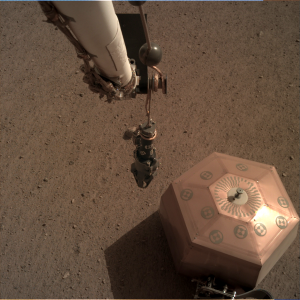SSA has added a new technical session for the 2019 SSA Annual Meeting: “The InSight Mission – Seismology on Mars and Beyond.” The deadline to submit abstracts to this special session is Thursday, 17 January at 5 p.m. Pacific.

Session Description:
The InSight mission landed on Mars on November 26, 2018 and was the first to place an ultra-sensitive broad band seismometer on the surface of another planet. It will provide key information on the composition and structure of an Earth-like planet that has gone through most of the evolutionary stages of the Earth up to, but not including, plate tectonics. Using seismology, geodesy and heat flow measurement, InSight aims to determine the thickness and structure of the Martian crust and mantle, the size and state of the core, the planet’s thermal state and the level of tectonic activity and rate of meteorite impacts.
The two-year (one Mars year) InSight mission ushers in a new era in planetary seismology. In the coming years and decades NASA may launch missions to explore the interiors of our Moon, Venus and the “Ocean Worlds” of the Solar System (e.g., Europa, Enceladus and Titan). Other Space agencies might also launch additional missions with seismometers. While the focus of these mission concepts vary from fundamental geophysics to detection of life and conditions for life, seismological exploration of planetary bodies’ interiors is likely to play a key role in understanding planetary state and evolution by helping to determine their thermal and chemical make-up.
We invite contributions that provide overviews of the InSight mission, including description of its experiments, instruments, models, data access and services, as well as observations made in the first few months of operation. We also invite contributions that describe past and future seismological exploration of the Solar System.
Conveners: Sharon Kedar (NASA Jet Propulsion Laboratory), Mark Panning (NASA Jet Propulsion Laboratory), Bruce Banerdt (NASA Jet Propulsion Laboratory)
